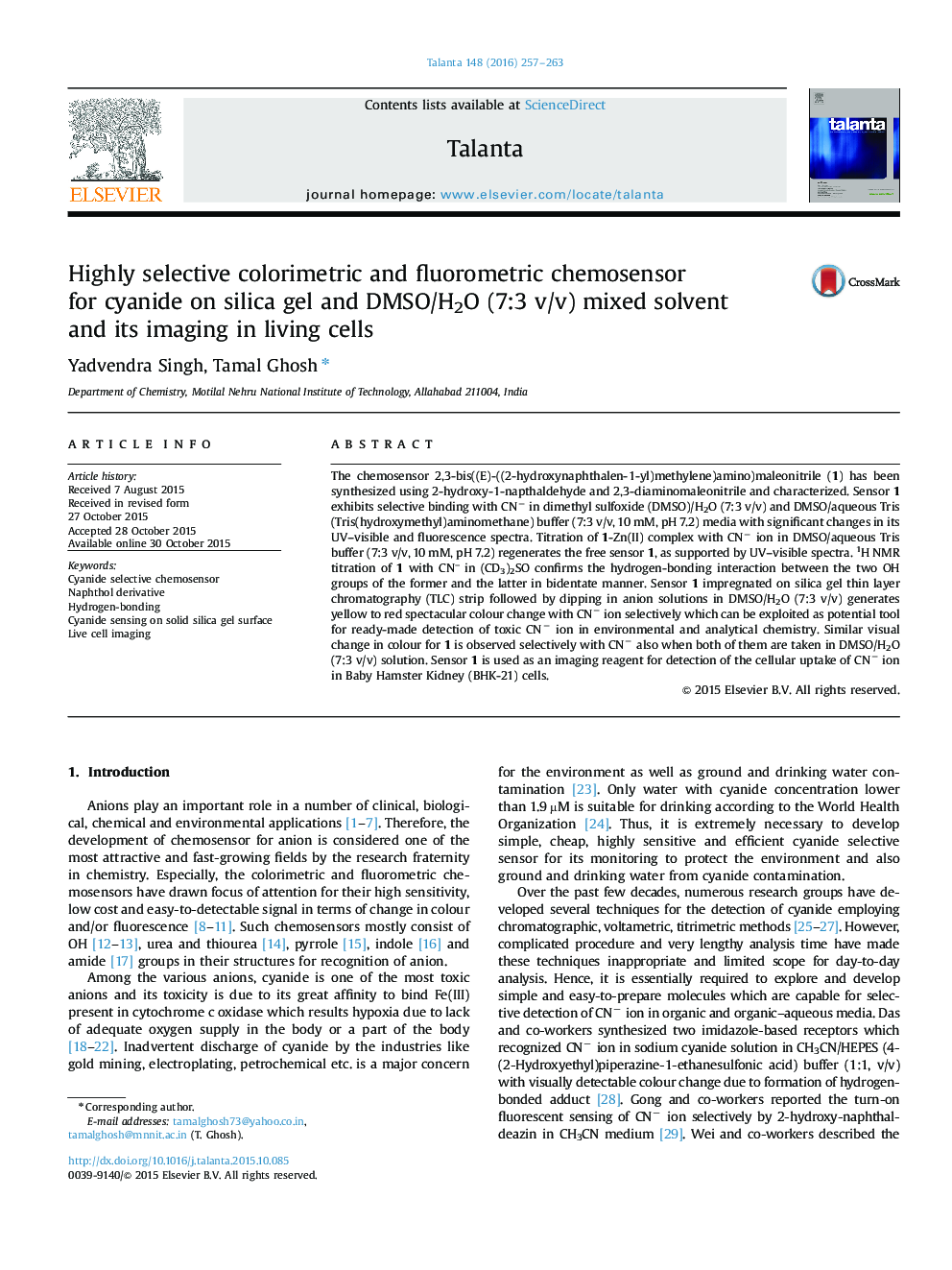| Article ID | Journal | Published Year | Pages | File Type |
|---|---|---|---|---|
| 1243782 | Talanta | 2016 | 7 Pages |
•A CN− selective naphthol derivative has been synthesized and characterised.•Exhibits visual colour change with CN− in DMSO/H2O and DMSO/aqueous Tris buffer.•Silica TLC strip impregnated with derivative shows same colour change with CN−.•Acts as an imaging reagent for detection of CN- in BHK-21 cells.
The chemosensor 2,3-bis((E)-((2-hydroxynaphthalen-1-yl)methylene)amino)maleonitrile (1) has been synthesized using 2-hydroxy-1-napthaldehyde and 2,3-diaminomaleonitrile and characterized. Sensor 1 exhibits selective binding with CN− in dimethyl sulfoxide (DMSO)/H2O (7:3 v/v) and DMSO/aqueous Tris (Tris(hydroxymethyl)aminomethane) buffer (7:3 v/v, 10 mM, pH 7.2) media with significant changes in its UV–visible and fluorescence spectra. Titration of 1-Zn(II) complex with CN− ion in DMSO/aqueous Tris buffer (7:3 v/v, 10 mM, pH 7.2) regenerates the free sensor 1, as supported by UV–visible spectra. 1H NMR titration of 1 with CN‒ in (CD3)2SO confirms the hydrogen-bonding interaction between the two OH groups of the former and the latter in bidentate manner. Sensor 1 impregnated on silica gel thin layer chromatography (TLC) strip followed by dipping in anion solutions in DMSO/H2O (7:3 v/v) generates yellow to red spectacular colour change with CN− ion selectively which can be exploited as potential tool for ready-made detection of toxic CN− ion in environmental and analytical chemistry. Similar visual change in colour for 1 is observed selectively with CN− also when both of them are taken in DMSO/H2O (7:3 v/v) solution. Sensor 1 is used as an imaging reagent for detection of the cellular uptake of CN− ion in Baby Hamster Kidney (BHK-21) cells.
Graphical abstractFigure optionsDownload full-size imageDownload as PowerPoint slide
